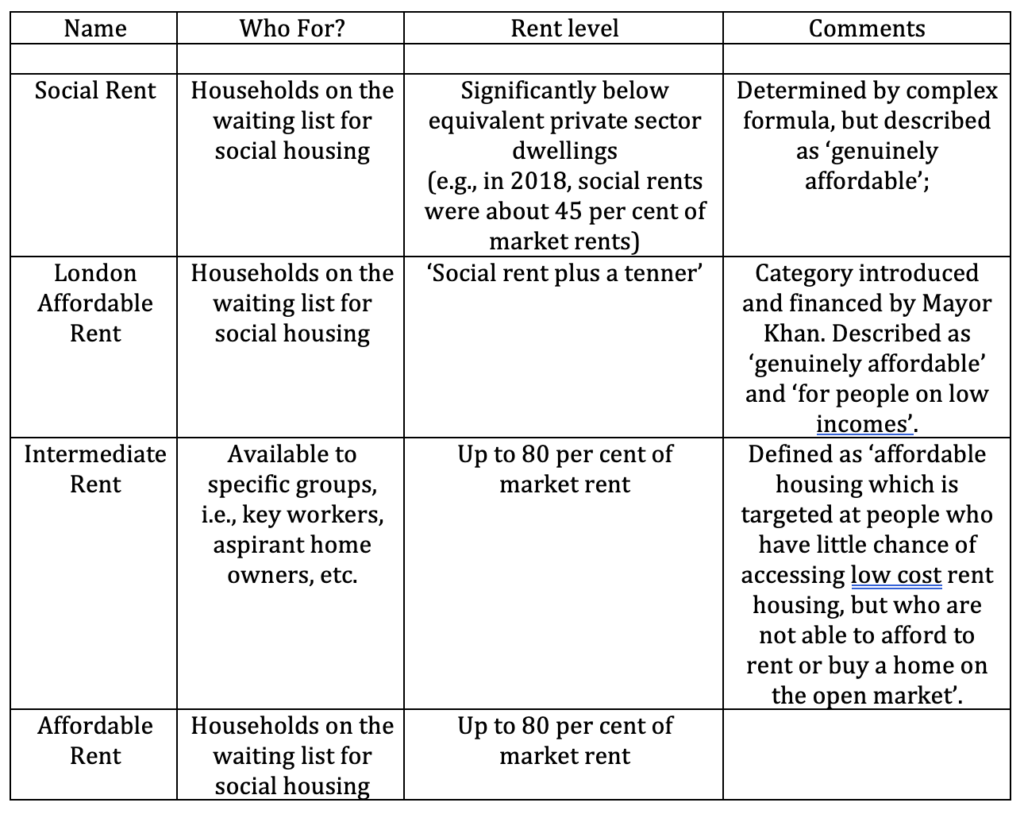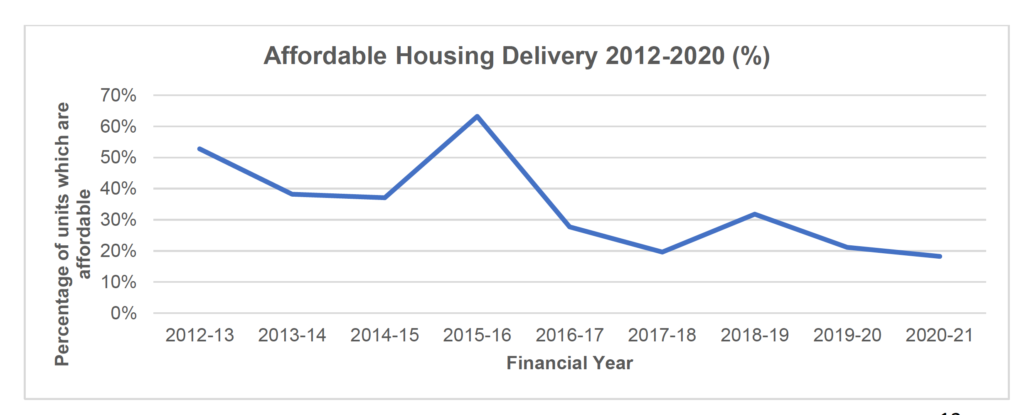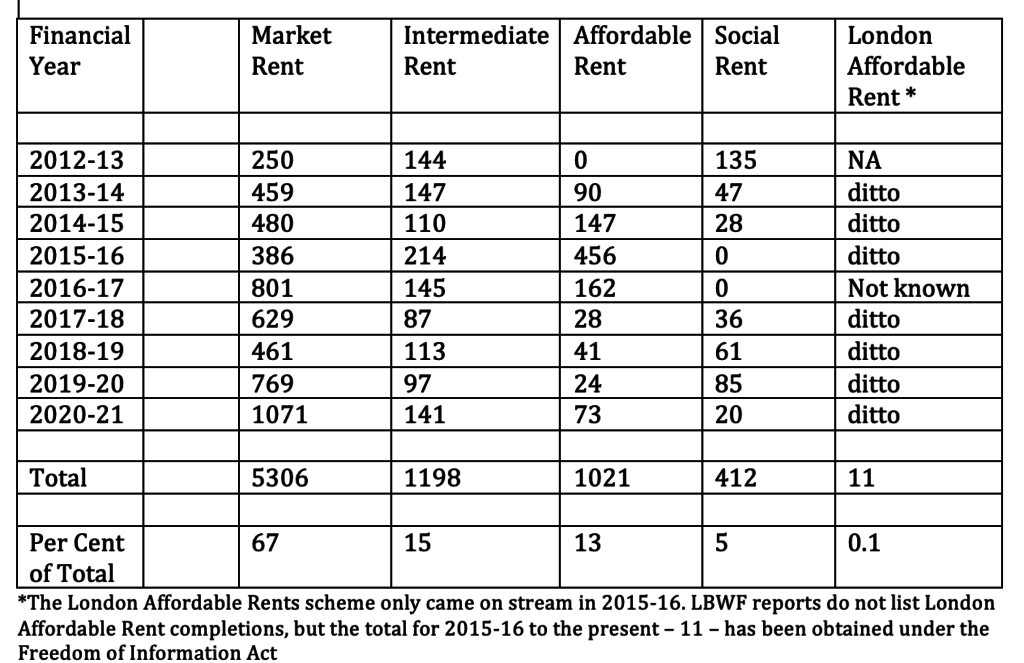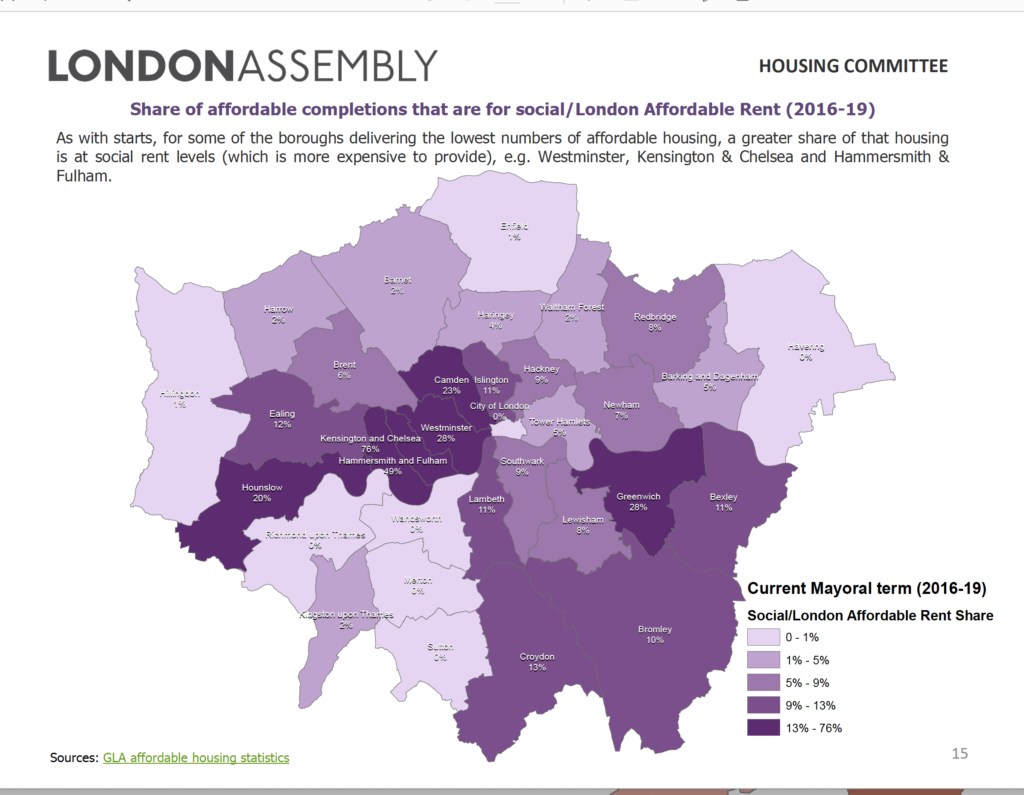LBWF housing scandal: just 5 per cent of the new homes built in Waltham Forest since 2012 were classified as ‘genuinely affordable’…and this from a Labour council!
As this blog consistently has argued, for some years now LBWF has overlooked its responsibilities to those with least means.
Further evidence of this regrettable trend is revealed by examining how LBWF has performed when measured against its oft repeated promise to ensure, using its planning powers, that 50 per cent of the new homes which developers and construction companies complete each year in the borough are ‘affordable’.
It’s worth emphasising at the outset that the word ‘affordable’ in this context often triggers confusion and cynicism, because, as veteran London journalist Dave Hill notes, ‘the range of housing types to which the word “affordable” is applied has become so wide as to seem close to meaningless’, and anyway ‘some “affordable” types are not affordable to all’.
However, looking beyond the spin which Mr. Hill rightly identifies, it becomes apparent, first, that what’s commonly referred to as ‘affordable housing’ in fact breaks down into four main sub-categories, and second, that two of these are specifically constituted to offer cheaper rents than the other two, and thus are widely known as ‘genuinely affordable’:
That’s the essential background. So what has LBWF achieved, first in terms of ‘affordable housing’ as a whole, and then in terms of these various sub-categories?
To start with, it is disappointing to find that, as a proportion of all new completions in the borough, ‘affordable housing’ of all kinds has only exceeded 50 per cent in two years out of the last nine, and from 2016 has followed a largely downward trend:
But there is worse, because analysing total annual housing completions in the borough according to the type of rent charged reveals the following:
To summarise, over the past nine years:
- two-thirds of all completions were for market rent;
- so called ‘affordable housing’ of all types constituted only one-third of the total, in other words nowhere near the 50 per cent promised; and
- the ‘genuinely affordable’ categories, Social Rent and London Affordable Rent, made up just 5 per cent of the total.
Of course, LBWF will no doubt respond to the last figure by claiming that it’s the government’s fault, the money isn’t there, the future will be different, it tried hard, and so on.
But a graphic produced for the London Assembly Housing Committee suggests that such excuses are unconvincing.
For it shows that, in the period 2016-19, while eight London boroughs oversaw the building of fewer ‘Social/London Affordable Rent’ properties than LBWF, 20 London boroughs oversaw more, often considerably more:
If it can be done elsewhere, it can be done in Waltham Forest.
And given that in mid-2021, LBWF had 8,648 people on its waiting list, the tenth biggest total amongst London boroughs, and homeless people are being housed as far away as Stoke on Trent, the fact that it hasn’t been done can only be described as a scandal, and a scathing indictment of the Labour administration’s priorities.




